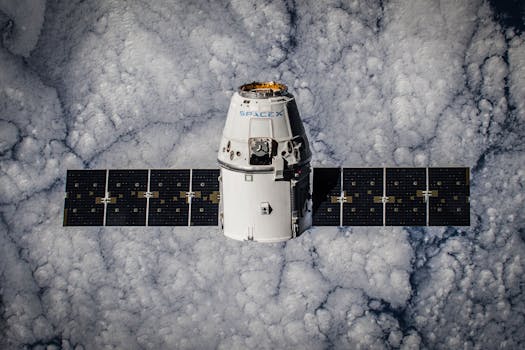
From Ground to Sky: The Evolution of Satellite Telecommunications Technology
The evolution of satellite telecommunications technology has transformed the way we communicate, from ground to sky. From the early days of satellite communications to the current state of advanced satellite technology, this field has undergone significant changes over the years. In this article, we will explore the history, current state, and future of satellite telecommunications technology.
Historically, the concept of satellite communications dates back to the 1940s, when scientists like Arthur C. Clarke proposed the idea of using satellites for communication purposes. However, it wasn’t until the 1960s that the first commercial satellite, Intelsat 1, was launched. This marked the beginning of a new era in satellite telecommunications, with satellites being used for television broadcasting, telephone calls, and other forms of communication.
The 1980s saw the introduction of mobile satellite communications, which enabled people to make phone calls and send messages from remote areas. This technology was particularly useful for emergency services, such as search and rescue operations. The 1990s witnessed the launch of the first satellite navigation system, GPS, which revolutionized the way we navigate and find our way around the world.
In recent years, satellite telecommunications technology has become more advanced, with the development of high-throughput satellites (HTS) and very high-throughput satellites (VHTS). These satellites offer faster data speeds and greater capacity, making them ideal for applications such as broadband internet, video streaming, and cloud computing. The use of satellites for 5G networks is also becoming increasingly popular, with many companies investing in satellite-based 5G infrastructure.
The Current State of Satellite Telecommunications Technology
Today, satellite telecommunications technology is used in a wide range of applications, from military communications to civilian uses such as weather forecasting and disaster response. Satellites are also used for remote sensing, which involves collecting data about the Earth’s surface and atmosphere using sensors and cameras. This data is used for various purposes, including environmental monitoring, crop management, and urban planning.
The use of satellites for communication purposes is also becoming more widespread, with many companies offering satellite-based communication services. These services include satellite phone calls, messaging, and internet connectivity. Satellites are also used for broadcasting television channels and radio programs, as well as for providing navigation services such as GPS.
The Future of Satellite Telecommunications Technology
The future of satellite telecommunications technology looks promising, with many new developments and innovations on the horizon. One of the most significant trends is the growth of the low-Earth orbit (LEO) satellite market, which is expected to reach $15.6 billion by 2027. LEO satellites offer faster data speeds and lower latency compared to traditional geostationary satellites, making them ideal for applications such as real-time video streaming and online gaming.
Another trend is the increasing use of satellite-based 5G networks, which offer faster data speeds and greater capacity compared to traditional wireless networks. Satellite-based 5G networks are also more reliable and secure, making them ideal for critical applications such as emergency services and financial transactions.
In addition, there is a growing interest in the use of satellites for space exploration and development. Companies such as SpaceX and Blue Origin are working on developing satellites and other space technologies for missions to the Moon, Mars, and other destinations in the solar system.
Conclusion
In conclusion, the evolution of satellite telecommunications technology has transformed the way we communicate, from ground to sky. From the early days of satellite communications to the current state of advanced satellite technology, this field has undergone significant changes over the years. As we look to the future, it is clear that satellite telecommunications technology will continue to play a vital role in shaping the world of communication and beyond.
See more:





